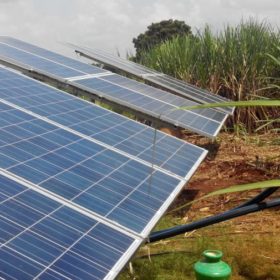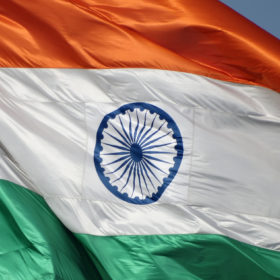CSIR-CMERI installs world’s largest solar tree
The Internet of Things (IOT)-enabled solar tree—using 35 solar PV panels with a 330 Wp capacity each—is especially useful for the agricultural community in providing electricity for high-capacity water pumps, e-tractors and e-power tillers. It can also allow precision agriculture through IoT-enabled features such as real-time humidity, wind speed, rainfall prediction, and soil health monitoring.
Odisha invites EoI for Konark solarization
Manufacturers and integrators of solar-based drinking water kiosks, solar trees, solar street lighting systems, and e-rickshaw charging infrastructure can submit their interest by August 29.
SunSource Energy bags Lakshadweep’s largest solar-plus-storage project
The 1.95 MW solar plant with 2.15 MWh battery storage will power four islands of the union territory—Agatti, Kavaratti, BangaRam and Thinnakara.
Another bidding extension for off-grid solar pumping systems in Madhya Pradesh
Bidders now have until June 26 to bid for installation and commissioning of standalone off-grid solar water pumping systems in the State of Madhya Pradesh.
Mobile solar pumping system offers pay-as-you-go solution for farmers
Researchers have simulated a cart-mounted solar pump which they say would mean farmers in off-grid areas would be able to irrigate fields by paying only for the solar electricity used.
Covid delayed 63% of India’s utility-scale solar in first quarter
Covid-19-prompted disruption severely impacted solar installation during January-March, 2020 as the country added only 689 MW of utility-scale PV against 1,864 MW scheduled to be commissioned.
Modi calls for a rooftop-solar-powered city in every state
The prime minister again emphasized the need for India to develop a domestic solar manufacturing industry and also urged officials to get on with plans to make Ladakh carbon-neutral.
Odisha’s Konark sun temple and town to go 100% solar
The central government plans setting up of a 10 MW grid-connected solar project and various off-grid applications like solar trees and solar drinking water kiosks to meet all the energy requirements of Konark town.
CEL invites bids to install off-grid solar pump systems in Madhya Pradesh
The successful bidders shall supply balance-of-system (BOS) and install and commission the solar pumping systems with modules supplied by the Central Electronics Limited. Bidding closes on May 25.
Project developers in south Asia can secure cash from IRENA funding pot
The Climate Investment Platform launched by three multilateral bodies in September is now open for business and renewables companies in developing nations across 14 regions including south Asia could qualify for help with clean energy facilities, renewables-related grid improvements and energy efficiency schemes.













